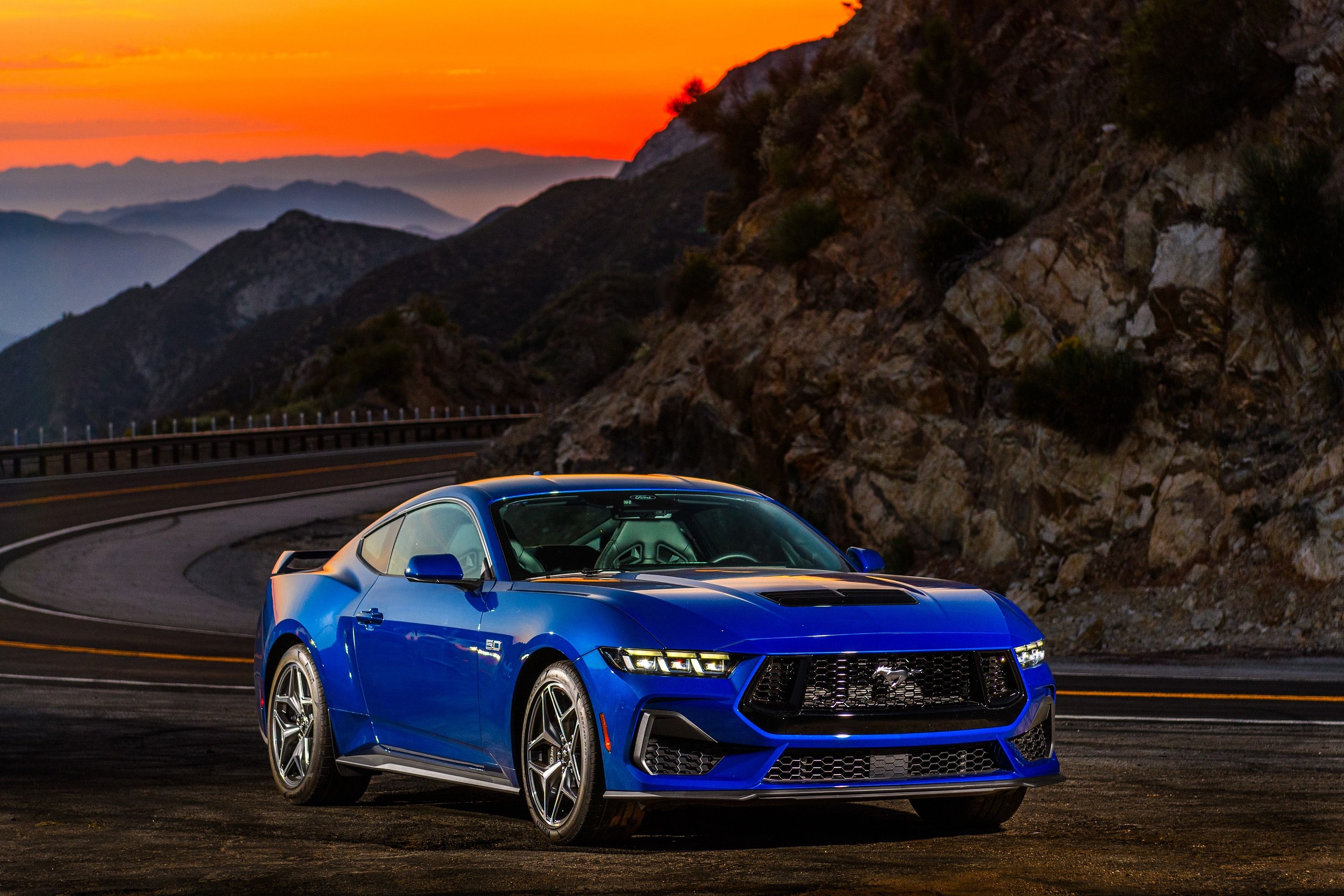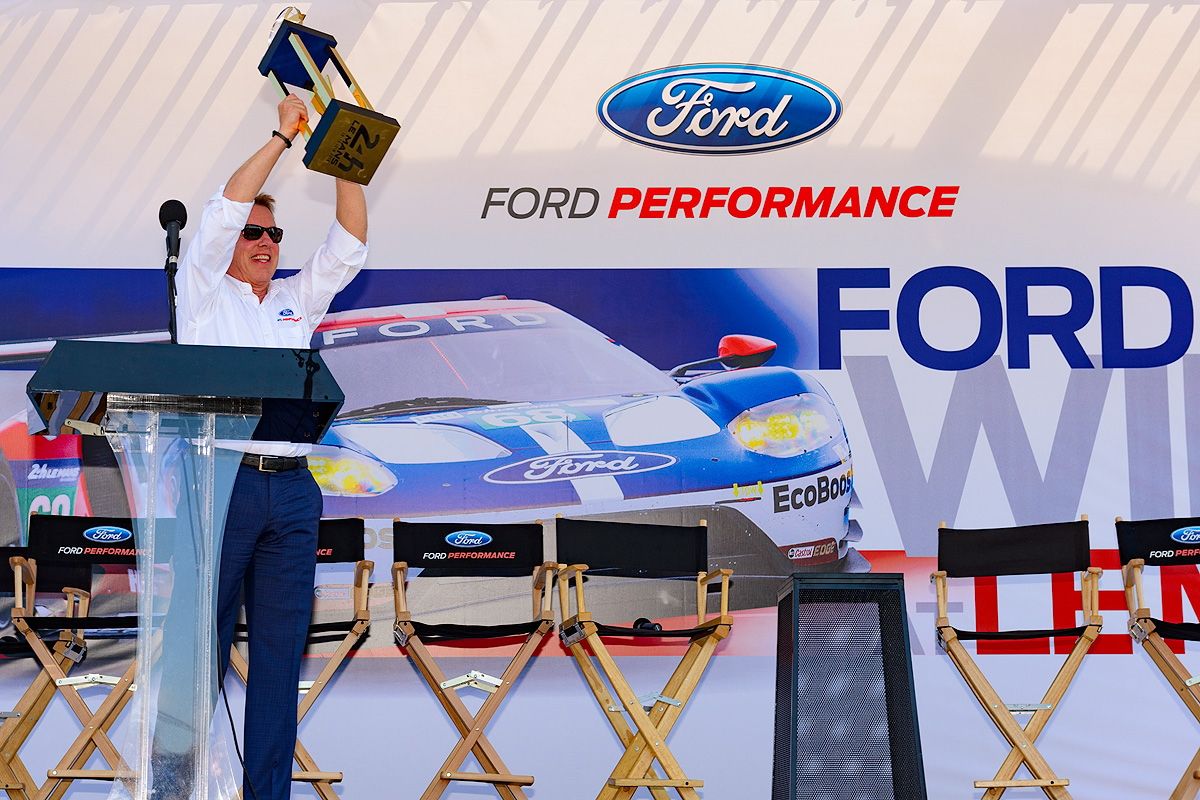
The seventh-generation 2024 Ford Mustang has just been revealed to the world after the conclusion of a teaser campaign that confirmed a V8 engine and a GT3 variant for track racing. Loaded with fun features like a drift brake and roof-mounted USB ports for your GoPro camera, the new S650 Mustang is aimed squarely at enthusiasts. But as it turns out, it's also meant to be a highly versatile racer that will compete in more than just GT3 competitions.
Ford has revealed that it is launching six racing Mustangs that will compete globally in a variety of series, including GT3, GT4, NASCAR, and NHRA Factory X racing.
Among these new race cars will be two Dark Horse Mustangs. We originally thought this referred to a trim package, but it makes much more sense here. "Dark horse" is the term typically used in horse racing to refer to a competitor that is relatively unknown but unexpectedly wins. Clearly, Ford wants to take the Mustang places it's never been before, and it wants to achieve greatness in those places. But it's not only interested in satisfying teams with big budgets - one of the new arrivals is aimed at the "weekend track day enthusiast," although it remains illegal for street use.
The first model is the Dark Horse S, based on the 500-horsepower Dark Horse street car. Stripped down to the essentials, the Dark Horse S features a full FIA-certified roll cage, safety nets, a race seat with safety belts, and a quick-release race steering wheel. As you'd expect in a race car, electrical system disconnects and a fire impression system have been added too, along with a central panel housing switches and knobs for all the basics like headlights, indicators, wipers, mirror adjusters, and the rain light. There's also a pit lane speed limiter and an acquisition display system. You can optionally add a passenger seat.
On the outside, hood pins, front and rear tow hooks, an adjustable rear wing, and a full exhaust system are evident. The car comes painted from the factory and "ready for individual vehicle liveries." Upgraded brakes, Multimattic DSSV dampers, and adjustable ride height and camber settings have also been added.
For the Dark Horse R, you get everything from the S, along with special serialization that approves the vehicle for racing. Strategic seam welding, a fuel cell, and Ford Performance Parts wheels come standard, making this a car for the serious racing driver.
"Both Dark Horse S and R have been further enhanced for performance and stripped of almost every unneeded comfort, keeping only what is needed to provide better performance," said Ed Krenz, Ford Mustang chief nameplate engineer. These are the vehicles that Ford is willing to tell us about in detail right now, but more race cars will roll out "over the next year."
Among them will be an all-new Mustang GT3 racer (eligible for IMSA, WEC, and other GT3 series like Le Mans) that will also be available to customer teams. This will begin its campaign at the 24 Hours of Daytona in 2024 and has been developed by Ford Performance and Multimatic. Under the hood will be a 5.4-liter V8 based on the Coyote in the regular Mustang.
A new Mustang GT4 will also arrive for the 2023 season and will be eligible for global GT4 classes in IMSA, SRO and FIA GT. If that's not exciting enough, the Mustang will underpin a new race car for the exciting Australian Supercars series. In the coming years, new NASCAR Cup and NHRA Factory X racing models will also be introduced.
Speaking with Road & Track, Ford CEO Jim Farley revealed that the Blue Oval decided to take a different approach to racing with the Mustang. "This is something we have never done before," said Farley, an avid racer himself. "We want everyone from club racers to professionals to see Mustang as a really incredible choice globally in all series, all around the world."
Farley feels that this is the new model for racing for an OEM: "A GT car, in every class, selling parts to racers, selling performance parts to the people on the road and the people who track. We don't have to buy a Super Bowl ad for Mustang because we're going to be out there on the track, every weekend, all around the world. People will see that we put our money where our mouth is." He also confirmed that all racing Mustangs will be powered by a V8.
The flexibility of the Mustang will put it in front of motorsport fans all over the planet, and that's the best way to market a performance car, explains Farley. "I've been watching Miata and 911, especially what Porsche has done over the years. But they never had NHRA or NASCAR... We can do NHRA, we can do NASCAR, we can go to the Bathurst 1000. People will see Mustang everywhere. You can't say that with the 911... I can't wait to see Mustang competing with Ferrari and Porsche and Aston Martin, and all the other brands, globally." This is the same sort of zest for success that made Henry Ford II so motivated in the 1960s with the GT40, and it certainly worked.
Best of all, because Farley is a racer himself, he recognizes how expensive it can be. He's a true enthusiast who wants to bring the Mustang to racers of all sorts all over the world, and in his own words, "it's going to be awesome."

